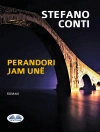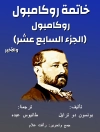The House of a Thousand Candles – Meredith Nicholson – Nicholson lived and traveled extensively in Indiana and it was a rich resource for his writing. The House of a Thousand Candles provides readers with the view of an outsider coming to Indiana. The book begins: Pickering’s letter bringing news of my grandfather’s death found me at Naples early in October. John Marshall Glenarm had died in June. He had left a will which gave me his property conditionally, Pickering wrote, and it was necessary for me to return immediately to qualify as legatee. It was the merest luck that the letter came to my hands at all, for it had been sent to Constantinople, in care of the consul-general instead of my banker there. See other titles by this author available from Kessinger Publishing.
लेखक के बारे में
Nicholson was born on December 9, 1866, in Crawfordsville, Indiana, to Edward Willis Nicholson and the former Emily Meredith. Largely self-taught, Nicholson began a newspaper career in 1884 at the Indianapolis Sentinel. He moved to the Indianapolis News the following year, where he remained until 1897.He wrote Short Flights in 1891, and continued to publish extensively, both poetry and prose until 1928. During the first quarter of the 20th century, Nicholson, along with Booth Tarkington, George Ade, and James Whitcomb Riley helped to create a Golden Age of literature in Indiana. Three of his books from that era were national bestsellers: The House of a Thousand Candles (#4 in 1906), The Port of Missing Men (#3 in 1907), and A Hoosier Chronicle (#5 in 1912).In 1928, Nicholson entered Democratic party politics, and served for two years as a city councilman in Indianapolis. He rose through the ranks of the Democratic party and was rewarded with appointments as Envoy to Paraguay, Venezuela, and Nicaragua.Nicholson was married first to Eugenie Clementine Kountze, daughter of Herman Kountze, and then to Dorothy Wolfe Lannon, whom he later divorced.












